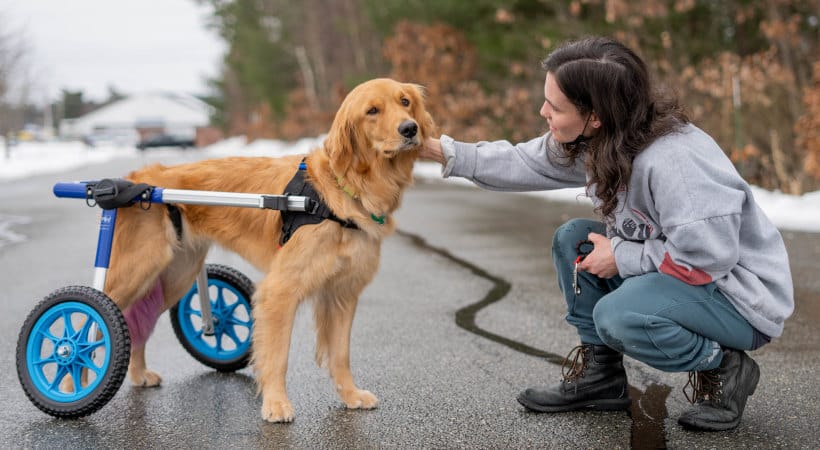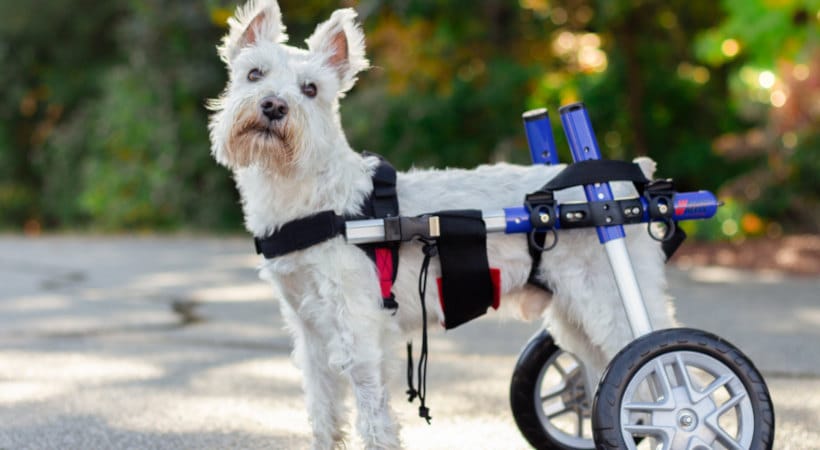It can be tough to work from home and care for your disabled pet. You must plan accordingly. Otherwise, you risk falling behind on work. Even worse, you could put your disabled pet in danger.
With the right approach, you can balance working from home and taking care of your disabled pet. In fact, there are many things you can do to discover a balance that works well for you, your disabled pet, and your employer. These include:
1. Establish a Routine
A work-from-home routine can help you and your disabled pet get into a daily rhythm. The routine ensures you can give your all to your everyday work. Meanwhile, you can take regular breaks to check on your disabled pet and provide him or her with plenty of care and support.
To build a work-from-home routine, map out your work day. Jot down any work tasks you need to complete and when you need to complete them. Also, consider how often you’ll want to check on your disabled pet. Account for feeding and giving your pet any medications. If you have a dog, you’ll want to allocate a sufficient amount of time for walks throughout the day.
Stick to your work-from-home routine as closely as you can, but be flexible. Remember, things can crop up that cause your routine to suddenly change. In these instances, adjust as needed. No matter how your routine changes, make sure your pet does not get lost in the shuffle. You can even hire a pet sitter who can care for your pet if you need to work long hours on certain days of the week.
2. Prioritize Your Work Tasks
At the beginning of each work day, make a list of tasks you need to complete. From here, you can refine your list and determine which tasks are urgent, important, or both. Next, you can prioritize your work tasks and ensure you have ample time to care for your pet as well.
Regardless of your work tasks, strive to maintain a healthy work-life balance. For instance, you can spend a few minutes away from your work tasks to take your dog for a walk around the block. This allows you to temporarily get away from the hustle and bustle of work and enjoy time with your canine companion — the latter of which has been proven to provide mental health benefits.
3. Protect Your Pet
Do everything you can to make sure your disabled pet will be safe throughout the work day. For example, if you want to keep your pet outdoors during your work day, keep your yard clean and trimmed. This limits the risk of your pet coming into contact with fleas and ticks that spread disease.
Understand what your disabled pet needs to remain entertained, too. You can set up playdates to socialize your pet. These dates ensure your pet can meet with others and have fun while you work. You may also want to buy toys to keep your pet entertained during work meetings.
Pick up the right wheelchair or other equipment to help your disabled pet stay comfortable. It often helps to meet with a veterinarian and discuss what options are available to assist your pet.
Walkin’ Wheels Wheelchair View Product Walkin’ Lift Rear Harness View Product Walkin’ Drag Bag View Product
4. Give Your Pet One-on-One Time
Make sure your disabled pet gets exclusive time with you during your work day. This one-on-one time ensures you can give your pet the care and attention it deserves. In addition, it can help you reduce stress and anxiety from work.
Use your one-on-one time to do something both you and your pet can enjoy. You can bring your pet to a local park to get some fresh air and enjoy the great outdoors. Or, you can take a few minutes to let your pet play with its favorite toy. Treasure this time during your work day, and your pet will do the same.
5. Reward Your Pet for a Job Well Done
Give your pet a treat, toy, or other reward if it behaves its best while you’re working. This positive reinforcement can lead your pet to continue to behave the same way when you work from home.
Try not to get upset if your pet misbehaves as you work. If your pet makes noise during a work call or joins you on screen during a video meeting, remain patient. At this time, learn from the experience and consider ways to prevent a similar situation from arising again.
6. Remain Flexible
Be open to doing whatever you can to help your disabled pet. You may find that you are most productive working in a home office space with your pet outside the room. Comparatively, you may feel more comfortable having your pet by your side as you work.
Experiment with different work-from-home options to identify what works best. If you discover something works well, stick with it. On the other hand, if something falls short of your expectations, tweak your work-from-home regimen.
7. Consult with Your Employer and Coworkers
If you find working from home with a disabled pet is becoming problematic, do not wait to share your concerns with your employer. At this point, your employer may be able to offer tips and recommendations to help you remain productive at work. Your employer may also provide tools or resources to help you care for your pet while you work from home.
Reach out to your coworkers for suggestions on how to care for your pet as your work. You may be able to learn from your peers and find the best ways to fully support your pet without compromising your workplace productivity.
The Bottom Line on Balancing Work-from-Home with a Disabled Pet
There is no one-size-fits-all approach to working from home with a disabled pet. Do your best to find a balance that meets the needs of you, your pet, and your employer, and fine-tune it over time. In doing so, you may discover a balance that ensures you can stay simultaneously productive at work and take care of your pet.
Guest Author:
Charlie Fletcher
Charlie Fletcher is a freelance writer and pet parent from the lovely “city of trees”- Boise, Idaho. Her love of writing pairs with her passion for animal rights and search for the truth. You can find more of her writing on her Contently.













